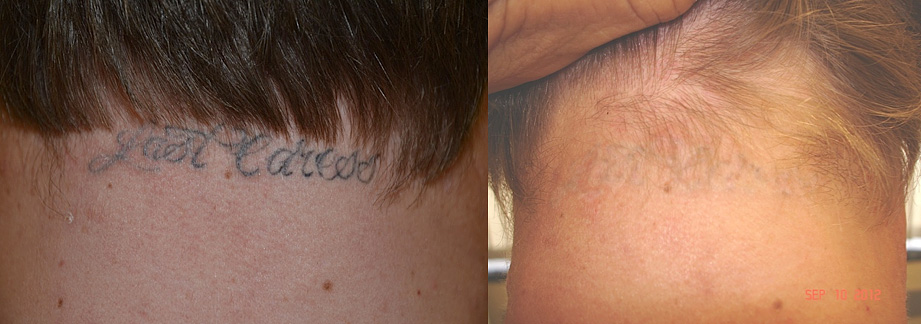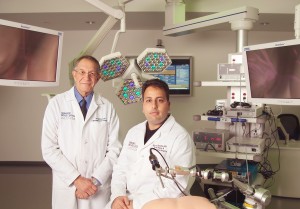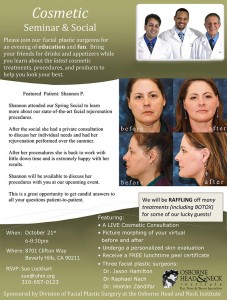- Shingles and Facial Nerve Damage - May 1, 2014
- Tattoo Removal - October 23, 2013
- Folliculitis: Frequently Asked Questions - April 12, 2011
- Adenoids: Frequently Asked Questions - April 12, 2011
- Serum Injection - September 17, 2010
- Treatment of Acne and Rosacea - September 10, 2010
Key Points:
- There are various methods for tattoo removal with differing levels of efficacy but the Saline Method is known to have high levels of efficacy with low pain, skin scarring, and is relatively affordable compared to other methods.
- The Saline Method works on both old and new tattoos of all colors.
- Fewer treatments are necessary with the Saline Method than with traditional laser therapies.
- Dr. Raphael Nach, of the Osborne Head and Neck Institute, Facial Plastics and Reconstructive surgery division is board certified in plastic surgery and frequently performs tattoo removal procedures using the Saline Method.

Tattoos have become more commonplace in recent years and as a result tattoo removal procedures have followed in popularity. Many times the process of selecting a tattoo removal procedure can be more daunting than the selection of a tattoo design or artist.
What are the different methods of tattoo removal?
- Saline Method – Pulls ink out from the skin using an injectable saline solution and has relatively little pain associated with it. There is lower scar potential and a faster timeline for removal than with traditional laser therapies.
- Dermabrasion – utilizes mechanical sanding of the affected area until enough layers of skin have been removed to reach the underlying layers where the tattoo pigment resides. Can be painful and cause extensive scarring.
- Creams – are widely available online and over the counter. At best, creams will lighten or distort the color of your tattoo but will not permanently remove it. Pigment molecules reside deep within the underlying layers of the skin, out of reach of a cream’s topical effects. Tattoo removal creams are non-FDA approved and can be potentially irritating to the skin.
- Laser – penetrates skin layers to break down ink particles. Laser treatments are known to be very painful and expensive compared to other procedures. Some lasers are not effective on different ink pigments and have been known to leave scars as well as skin discoloration.
- Cryotherapy – utilizes liquid nitrogen to freeze the tattoo and underlying skin. Usually painful and scar potential is high.
- Surgical Excision – surgical removal of the tattooed skin with suturing of the surrounding skin. This method is limited by the size of the tattoo and its location. Surgical excision usually results in scaring at the site of excision.
How Does the Saline Method work?
The saline method utilizes traditional tattoo equipment that is commonly used to introduce ink to the deep layers of the skin. Instead of ink, the saline method injects a saline solution into the skin that effectively bonds to pigment molecules trapped deep below the superficial layers. The body naturally recognizes these bound pigment particles and pushes them up toward the surface of the skin, eventually ejecting them and causing the area to scab and heal.
How effective is the Saline Method?
While the efficacy of other methods may be limited by the age of the tattoo or the pigments used, the Saline Method can remove both old and new tattoos regardless of pigments used. This method is also effective on amateur and professional grade tattoos and permanent makeup. Additionally, since the saline method does not rely on destruction of skin layers, the risk of scarring is considerably lower than more traditional methods. Finally, pain and wait time between treatments is decreased when compared to laser treatments.

Is the Saline Method expensive and does it take long?
The Saline Method usually requires fewer treatments than laser removal and is substantially more affordable because of this. Multiple saline treatments, spaced between 8 and 10 weeks, are required to obtain successful removal of the tattoo pigments.
Many tattoo removal procedures can be performed by people with minimal medical training, further adding to the apprehensions when selecting a suitable location. Dr. Raphael Nach, of the Osborne Head and Neck Institute, Facial Plastics and Reconstructive surgery division is board certified in plastic surgery and otolaryngology. Dr. Nach has 30 years of experience and frequently performs tattoo removal procedures using the Saline Method. His extensive training and experience allow him to anticipate and prevent complications and pitfalls experienced by traditional tattoo removal providers.
Contact a Physician at Osborne Head & Neck Institute
If you would like to speak with one of our physicians regarding this issue or another ear, nose, throat problem; or have other questions or concerns, please complete the contact form below or call us at 310-657-0123.



